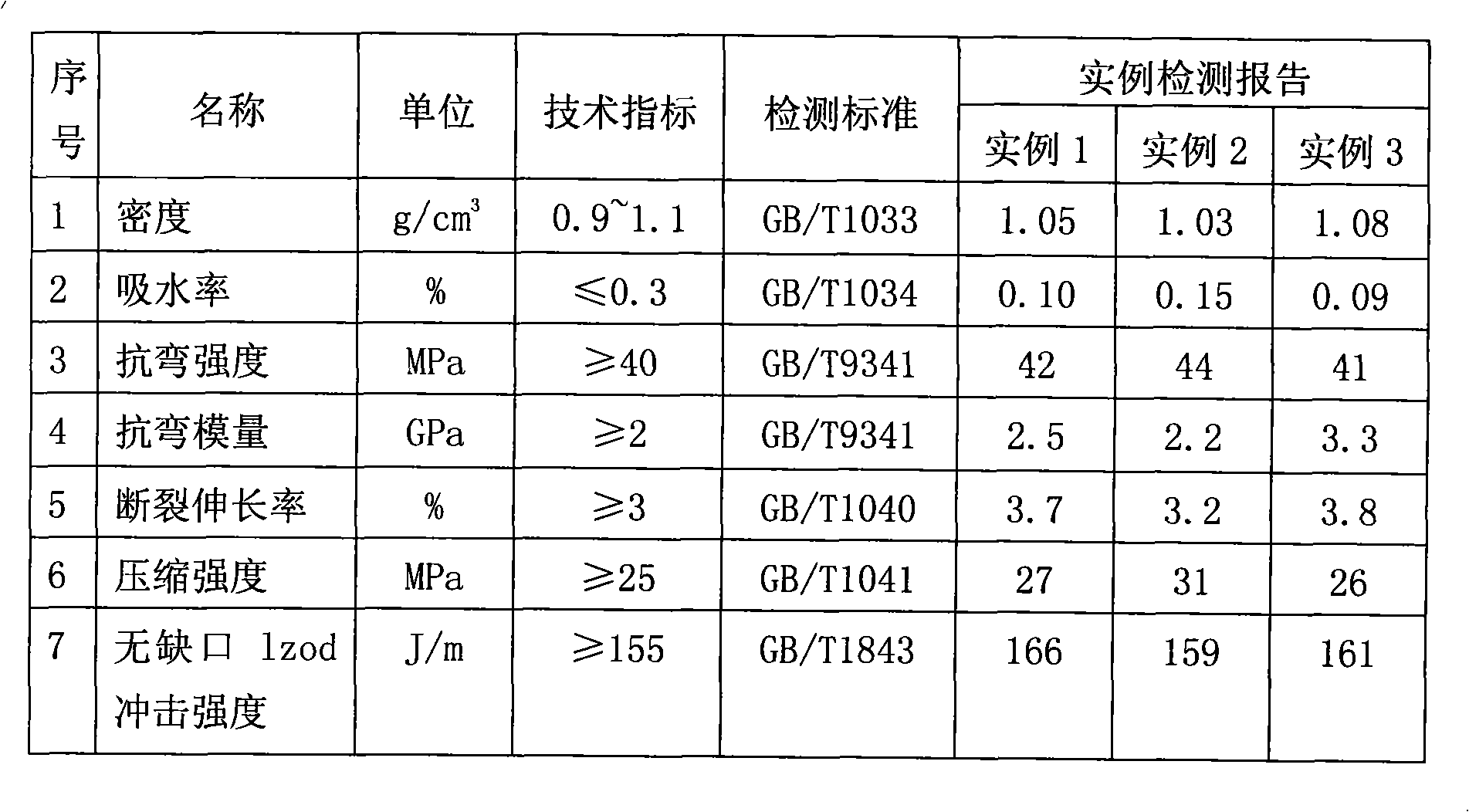Method for preparing flame-retardant wood-flour composite macromolecular thermoplastic resin material
A thermoplastic resin and composite polymer technology, applied in the field of composite plastic material preparation, can solve the problems of poor mechanical properties and dimensional stability, difficult filling of natural fiber materials, etc., and achieve excellent product performance, low cost and short production cycle. Effect
- Summary
- Abstract
- Description
- Claims
- Application Information
AI Technical Summary
Problems solved by technology
Method used
Image
Examples
Embodiment 1
[0046] The processing steps of the preparation method are as follows, wherein the content of each component is by weight:
[0047] 1. Plasticizing pretreatment of wood fiber,
[0048] 1.1. Crushing, kneading and grinding the wood fiber into 65-mesh wood fiber powder with a moisture content of ≤2%. Wood fiber is one or a mixture of wood waste, wood chips, sawdust, rice husk, rice straw, and wheat straw.
[0049] 1.2. Put 85 parts of lignocellulosic powder obtained in step 1.1 into a stirring device, add 3 parts of sodium hydroxide with a concentration of 2%, and remove the liquid after stirring for 2 hours.
[0050] 1.3. Add 5 parts of azobisisobutyronitrile with a concentration of 0.3% to the mixture obtained in step 1.2, and stir at 65° C. for 30 minutes.
[0051] 1.4. Add 1 part of styrene and 2 parts of methyl methacrylate to the mixture obtained by heating and stirring in step 1.3, and stir at 80°C for 35 minutes.
[0052] 1.5. After cooling the mixture obtained by heat...
Embodiment 2
[0060] The processing steps of the preparation method are as follows, wherein the content of each component is by weight:
[0061] 1. Plasticizing pretreatment of wood fiber,
[0062] 1.1. Crushing, kneading and grinding the wood fiber into 200-mesh wood fiber powder with a moisture content of ≤2%.
[0063] Wood fiber is one or a mixture of wood waste, wood chips, sawdust, rice husk, rice straw, and wheat straw.
[0064] 1.2. Put 120 parts of lignocellulosic powder obtained in step 1.1 into a stirring device, add 20 parts of sodium hydroxide with a concentration of 11%, and remove the liquid after stirring for 20 hours.
[0065] 1.3. Add 65 parts of azobisisobutyronitrile with a concentration of 1.2% to the mixture obtained in step 1.2, and stir at 92° C. for 30 minutes.
[0066] 1.4. Add 1 part of styrene and 2 parts of methyl methacrylate to the mixture obtained by heating and stirring in step 1.3, and stir at 105°C for 100 minutes.
[0067] 1.5. After cooling the mixture...
Embodiment 3
[0074] The processing steps of the preparation method are as follows, wherein the content of each component is by weight:
[0075] 1. Plasticizing pretreatment of wood fiber,
[0076] 1.1. Crushing, kneading and grinding the wood fiber into 100-mesh wood fiber powder with a moisture content of ≤2%;
[0077] 1.2. Put 100 parts of lignocellulosic powder obtained in step 1.1 into a stirring device, add 9 parts of sodium hydroxide with a concentration of 4.5%, and remove the liquid after stirring for 11 hours;
[0078] 1.3. Add 25 parts of azobisisobutyronitrile with a concentration of 0.85% to the mixture obtained in step 1.2, and stir at a temperature of 79°C for 65 minutes;
[0079] 1.4. Add 3 parts of styrene and 7 parts of methyl methacrylate to the mixture obtained by heating and stirring in step 1.3, and stir at 92°C for 120 minutes;
[0080] 1.5, the mixture obtained by heating and stirring in step 1.4 is cooled to obtain plasticized pretreated wood fiber powder;
[008...
PUM
 Login to View More
Login to View More Abstract
Description
Claims
Application Information
 Login to View More
Login to View More - R&D Engineer
- R&D Manager
- IP Professional
- Industry Leading Data Capabilities
- Powerful AI technology
- Patent DNA Extraction
Browse by: Latest US Patents, China's latest patents, Technical Efficacy Thesaurus, Application Domain, Technology Topic, Popular Technical Reports.
© 2024 PatSnap. All rights reserved.Legal|Privacy policy|Modern Slavery Act Transparency Statement|Sitemap|About US| Contact US: help@patsnap.com









